Loud, crowded, hot and confusing. The bustling city of Marrakech is rarely a love from first sight. A hectic place where slow living looks like it isn’t even an option. However, if you give Marrakech a second chance, the city can become a magical place.
It took me a couple of years to fall in love with Marrakech. I spent time exploring the city, discovering other neighbourhoods, and getting to know the history better. After five years of living in this red city, I finally fell in love. Why I moved to Morocco you can read here.
Imagine the splendid sunrise over the thousands of palm trees, narrow streets and the most beautiful carpets hanging on the walls of the Medina. Then, add the sounds of the early morning prayers and the smell of freshly baked bread and coffee. This is how magical Marrakech is if you get to know it better.
Coming to Morocco? Book your consultation
Book your 45-minute 1:1 video consultation call, and I will answer all your questions about Morocco, review your itinerary or create one together.
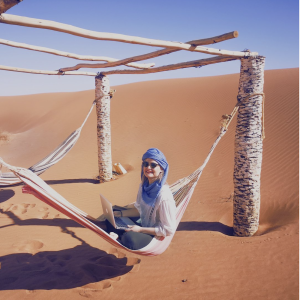
Marrakech is a great and diverse city to live in. When I miss the bustling streets and traditional culture, I go to Medina. When I want to feel like I’m in Europe, I walk in my neighbourhood, the modern Gueliz district. When I miss silence, in 15 15-minute drive, I watch the sunrise in the historical Palmeraie oasis surrounded by date palms and a dozen camels.
SHORT HISTORY OF MARRAKECH
Morocco has four Imperial Cities, so-called because each of them was once the capital city. The current capital is Rabat. Marrakech was the capital of Morocco twice and is the fourth largest city in the country, after Casablanca, Fez and Tangier.
Marrakech was founded in 1062 by the leader of the Berber Moroccan Almoravid empire dynasty Yusuf ibn Tashfin. Since then, the red city has achieved periods of great splendour, interrupted by repeated political struggles. In the 16 century, the Saadian dynasty created the most beautiful monuments of Marrakech: the Saadian Tombs, the El Badi Palace and several fountains of the Medina.
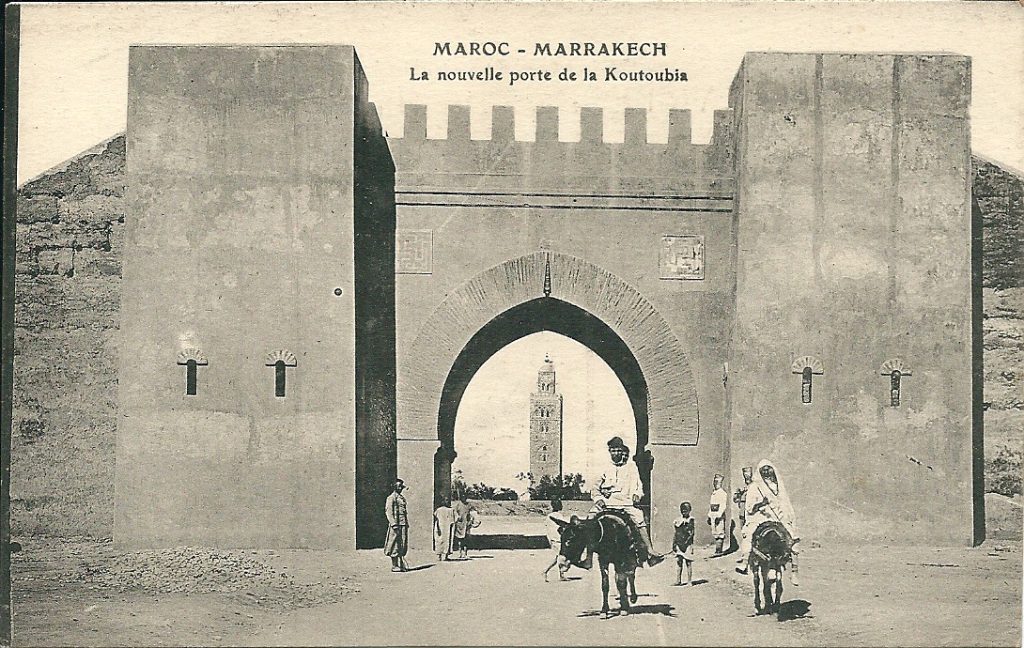

In 1631, the Arab Alaouites dynasty, the current Moroccan royal family, took over the country and moved the capital to Fes. Several essential sites, including El Badi palace, were disassembled and moved to Fez. The new ruler Sultan Moulay Ismail also sealed the famous Saadian tombs, hiding them from the public until they were rediscovered at the beginning of the XX century.
FRENCH INFLUENCE
In 1912 France established a protectorate over Morocco and shared the territory with the Spanish protectorate in the Nord. Finally, in 1956, Morocco was officially declared independent from France and Spain.
However, Spain refused to include Ceuta and Melilla in the handover. Until now, these two cities belong to Spain, and Moroccans need a European visa to enter. Only residents of Tétouan, the closest big city to the border, don’t need a visa to enter Ceuta or Melilla. The French colonial influence is evident in Morocco. The French language is dominant in education and administration. According to a 2012 study, 98% of Moroccans spoke Moroccan Arabic, 63% spoke French, 43% Amazigh, 14% spoke English, and 10% spoke Spanish.
The contrasts of Modern and Old parts of Marrakech:
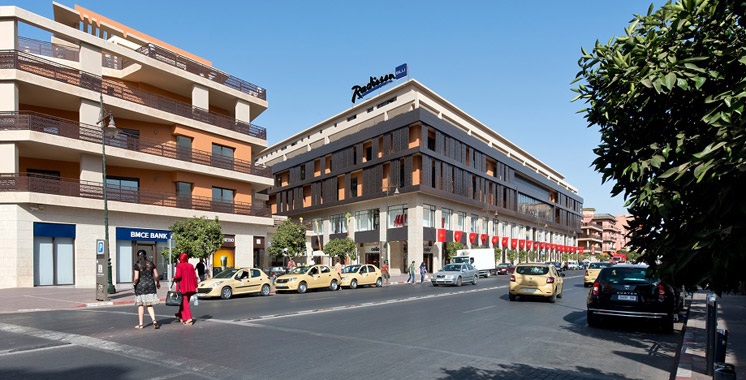

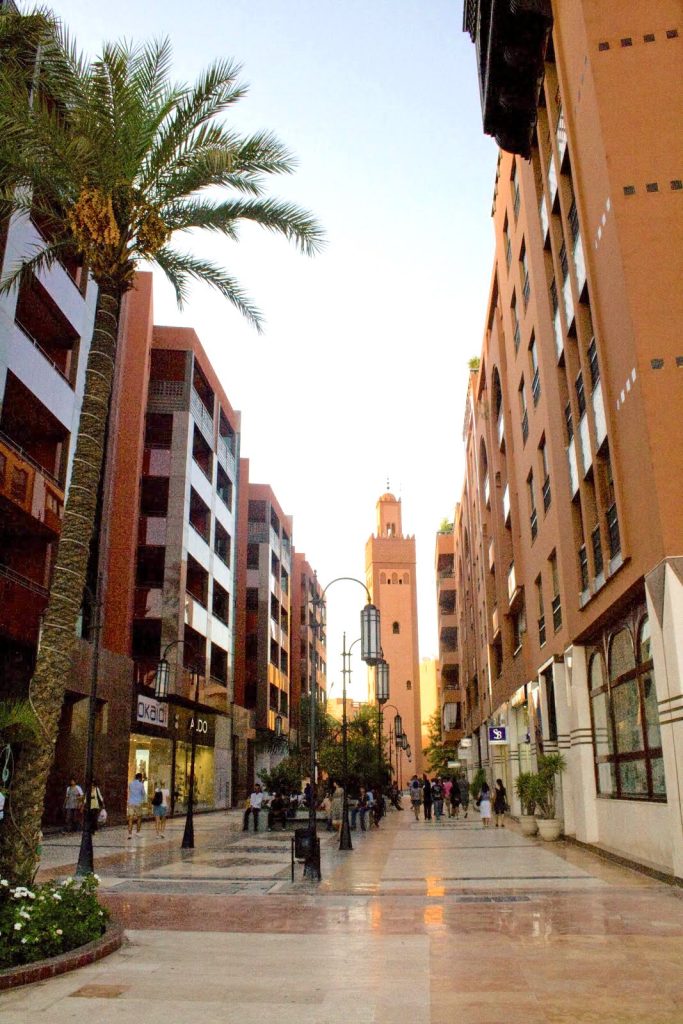

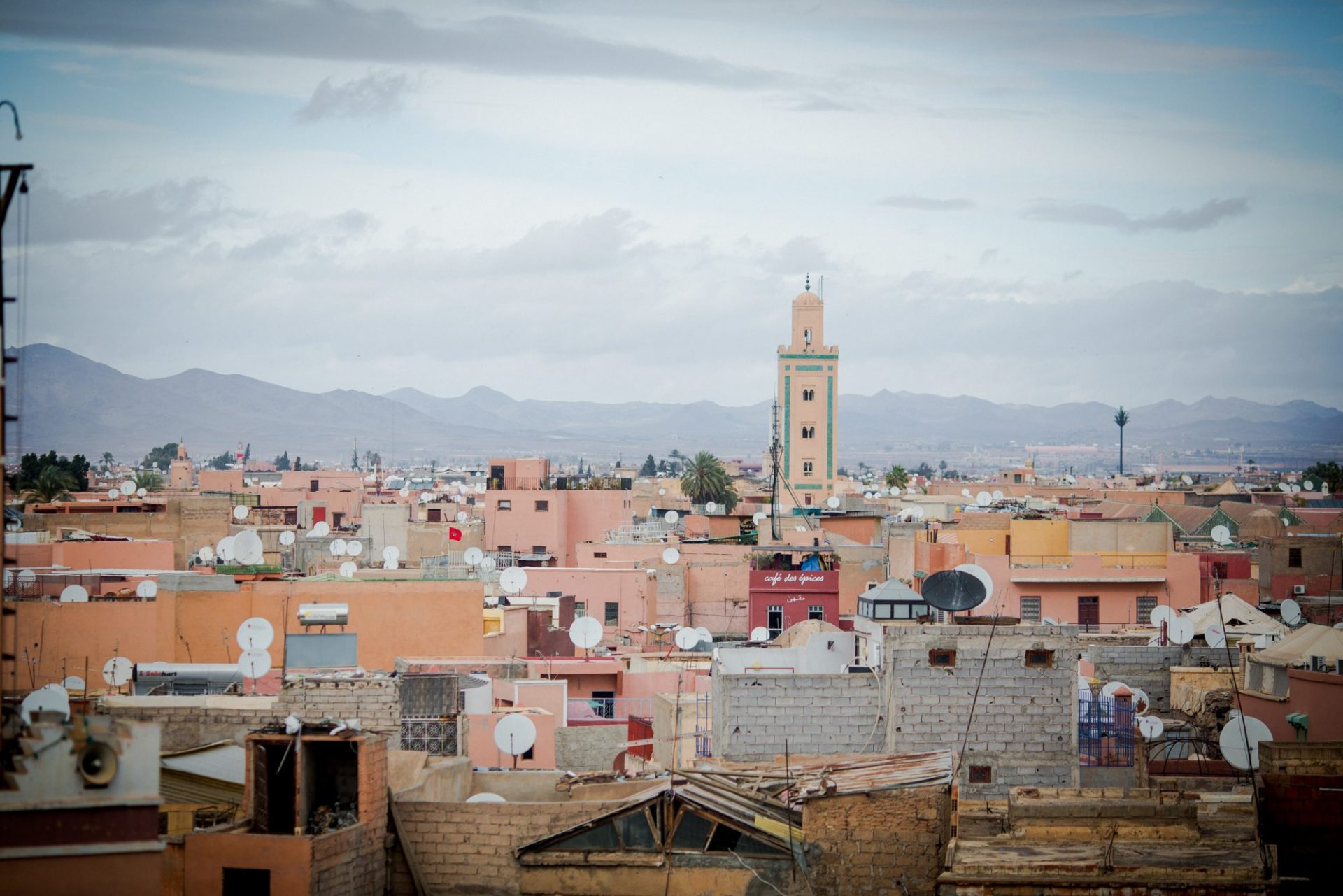

STRUCTURE OF MARRAKECH
Around one million Moroccans live in Marrakech, among many expats, primarily French. Foreigners invest in Morocco, build new hotels and expand the city lines. Recently, many new places opened on the roads to Ourika Valley, Ouarzazate, Fez etc.
In the city’s northern section, towards the highway to Fez, is my favourite sunset spot – the Palmeraie palm grove. An area of 140 km2 is covered with around 100,000 date palms.
Nearby, the Menara Gardens, the modern Hivernage district, is known for nightlife, with a casino, cocktail lounges, hotel dance clubs and chic global restaurants with live music.


THE MAP
The map above shows the most important districts of Marrakech: Medina and Kasbah with the Jemaa el-Fnaa square, from where a long Mohammed V avenue leads directly to the modern Gueliz. Next to Gueliz is located the Hivernage neighbourhood. The train station is located at the end of Gueliz, on avenue Mohammed VI (circled black on the map). The airport is located only 5 km from Medina.
You will find a bigger map of Marrakech districts here.















